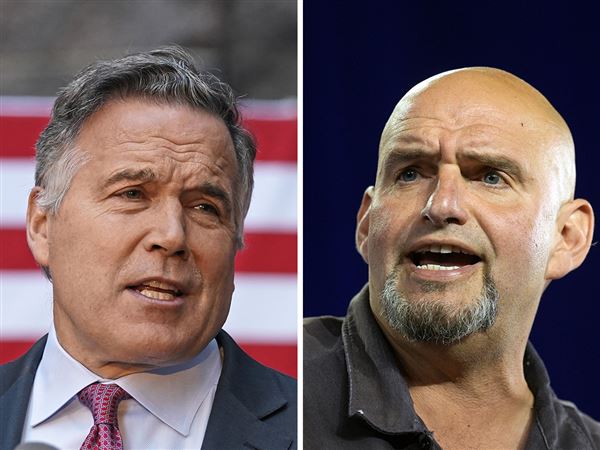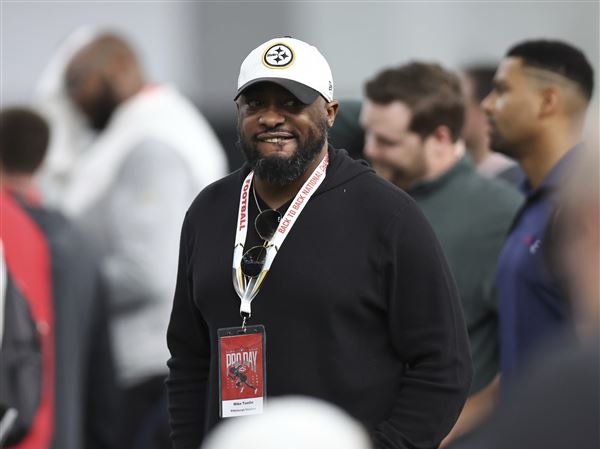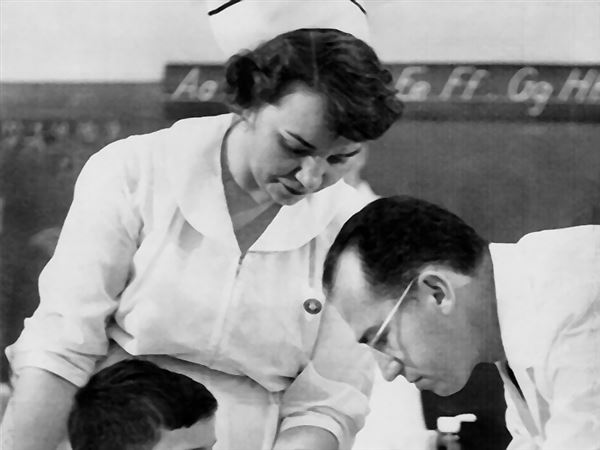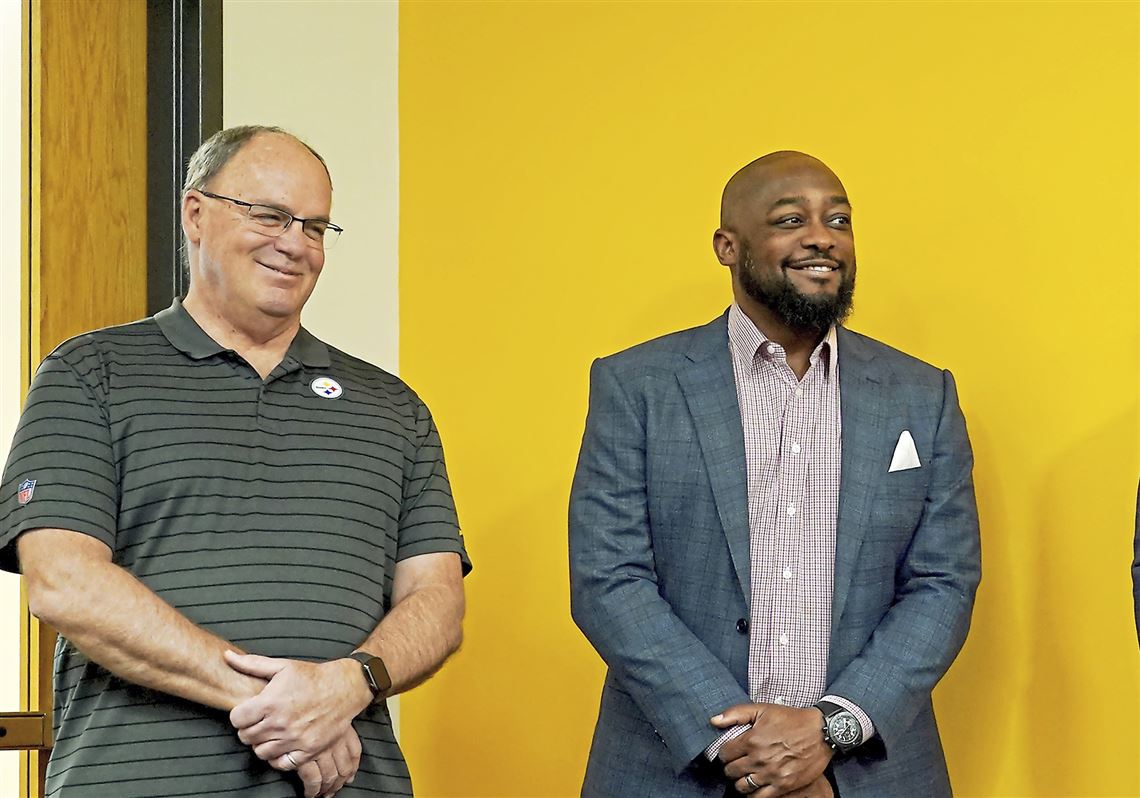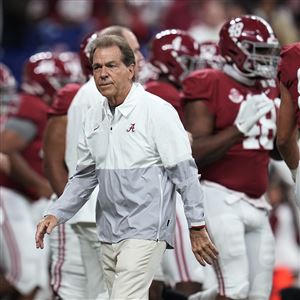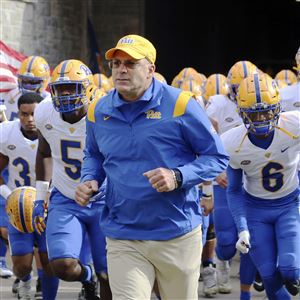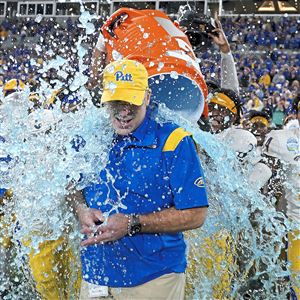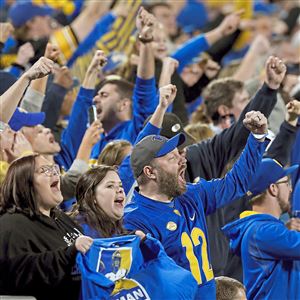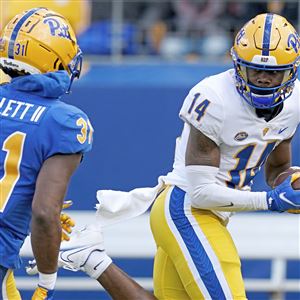This year’s NFL draft marked the first in a new era of college football, and retired Steelers general manager Kevin Colbert is curious to see its long-lasting effects.
The NCAA’s one-time transfer rule, which was approved last April, allowed hundreds of players to move freely in the portal without having to sit out and burn a year of eligibility. That movement wasn’t necessarily reflected in the draft. Among the first 105 selections, from the first round through the third round, six draftees utilized the new rule and transferred to a different program ahead of the 2021 season.
That number will likely jump with the portal exploding this offseason and more of last year’s transfers becoming draft-eligible. But Colbert, affording himself the opportunity to reflect on the current state of affairs after spending two decades with the Steelers, still believes there’s comfort in continuity.
“We’re all still trying to gather information and observe how NIL (name, image and likeness) and the increased transfers are going to affect our evaluation process, if it has any effect at all. It’s in its infancy,” Colbert told the Post-Gazette this week. “There’s always been transfers in every draft. Now we anticipate there will be more. And we all have to adjust to a comfort level along those lines. ... But the stability, the knowledge of seeing a player grow in a certain scheme and a certain environment and a certain conference, we’re more familiar with that than we are with transfers.”
Colbert emphasized that he isn’t against drafting transfers. A couple weeks ago, in his final draft as the Steelers’ general manager, he selected two in the seventh round: Ole Miss’ Mark Robinson and South Dakota State’s Chris Oladokun. At the same time, Colbert’s final first-round pick, Pitt’s Kenny Pickett, was not only the guy next door, but someone who stayed at his program for five years with other options on the table.
Pickett could have left for the NFL after the 2020 campaign. He also had the opportunity to transfer, with Notre Dame being a rumored suitor. “But he stayed at Pitt and had a great career,” Colbert said. “By staying that extra year at Pitt, he turned himself into an ACC championship-winning quarterback and a first-round pick.”
As most know by now, the player on the receiving end of 17 of Pickett’s 42 touchdowns is in the portal. Jordan Addison, last year’s Biletnikoff Award winner, is evaluating his options. While ESPN reported that returning to Pitt is a “viable option” for Addison, that rarely happens. He visited Texas this week and reportedly plans to visit USC this weekend. Addison’s previous connection to the Trojans and their suspected tampering sparked a national conversation around NIL and the transfer rule.
Addison, a projected first-round pick in early 2023 mock drafts, could secure that status at USC in Lincoln Riley’s high-flying offense. Alabama, another possible destination, has had five first-round receivers in the last three drafts. That group includes Jameson Williams, who utilized the one-time rule, transferring from Ohio State before the 2021 season and becoming a Biletnikoff finalist alongside Addison.
Williams is one of several portal success stories in this year’s draft. Jermaine Johnson, who couldn’t crack Georgia’s first-team defense, dominated at Florida State for a season before going 26th overall to the Jets. Michigan State running back Kenneth Walker III bulldozed the Big Ten for a year and won the Doak Walker Award after leaving Wake Forest. Arnold Ebiketie (Temple to Penn State) and Wan’Dale Robinson (Nebraska to Kentucky) went 38th and 43rd overall, while Jelani Woods (Oklahoma State to Virginia) landed in the third round.
Addison is different in that he was wildly successful at Pitt while Williams, Johnson, Robinson and Woods were looking for bigger roles elsewhere. Regardless, Colbert understands that cases like Addison and others entering the portal late in their careers could change the NFL’s evaluation approach.
“In most scouting situations for NFL teams, you have area scouts that become familiar with a given school, a given program, contacts within a program, and your scout’s identifying players at a young age and keeping track of them. That’s what we’ve grown with,” Colbert said. “Now, we’ve had to adjust that. Maybe one area scout has a player he knew for two years, then all of a sudden he goes to a different area, and that new scout has to learn all about this player. Can you put those evaluations together at some point? Most likely. But it’s a new learning process that we’re all going through.”
A part of that process for NFL teams, Colbert said, will be looking at transfers’ on-field and off-field situations before and after leaving their school. Off the field, Colbert said he has “nothing against” players benefiting off their NIL, adding that “it’s their right” to do so.
“If NIL benefits a player financially, good for him,” he said. “But we don’t know how that’s going to affect him as a pro as he develops in that last year in school, wherever that may be. We can’t say it’s a positive, and we can’t say it’s a negative.”
At this point, there are a lot of questions surrounding the transfer portal, NIL and how the NFL endgame fits in. Colbert is retired, so he won’t have to answer those himself. But he does hope to help whomever follows him navigate the evaluation process affected by the ongoing changes in college football.
“Individually, you have to look at each case as to why a player is transferring and make those decisions,” Colbert added. “But the comfort of knowing and watching a guy grow within a scheme, we all feel more comfortable. Because that other part is unknown.”
Johnny McGonigal: jmcgonigal@post-gazette.com and Twitter @jmcgonigal9
First Published: May 13, 2022, 9:30 a.m.
